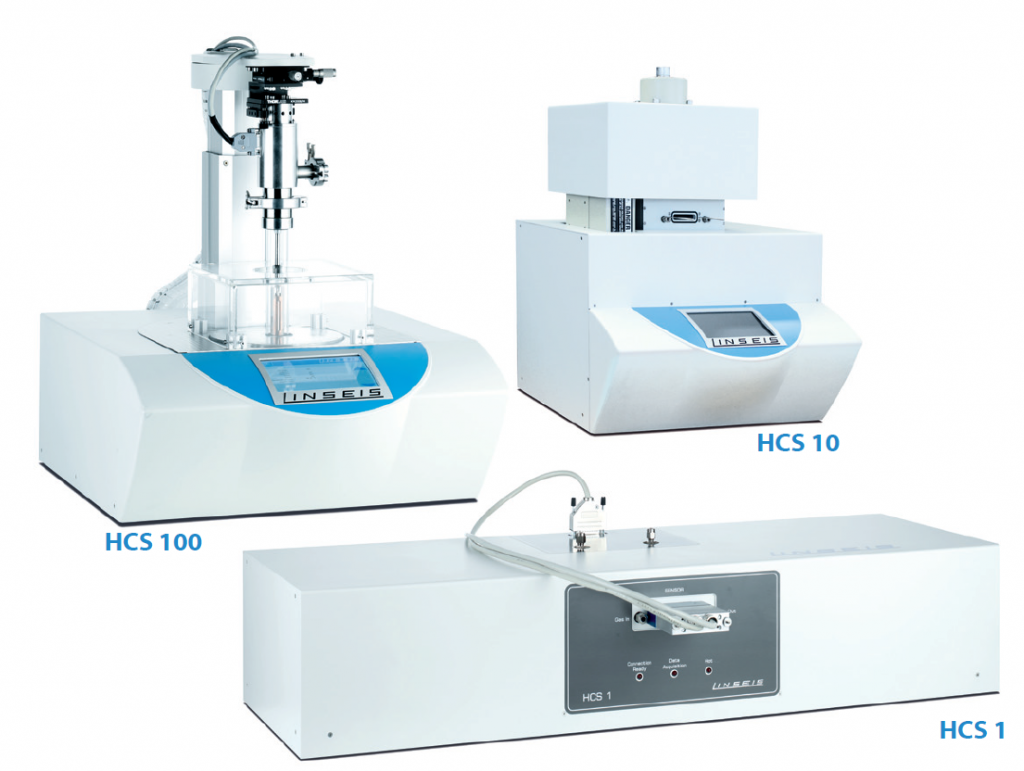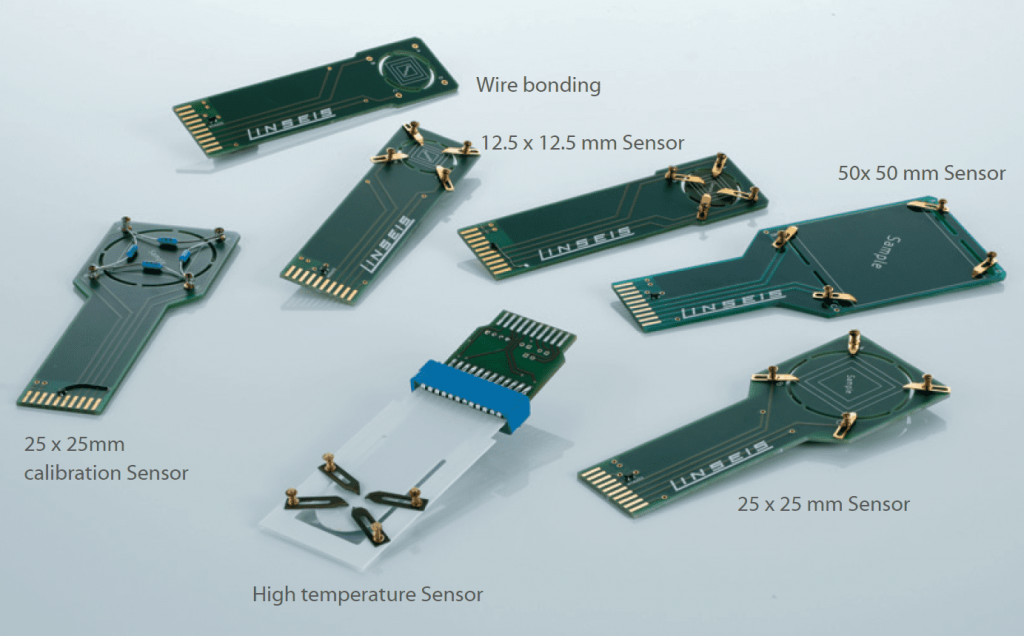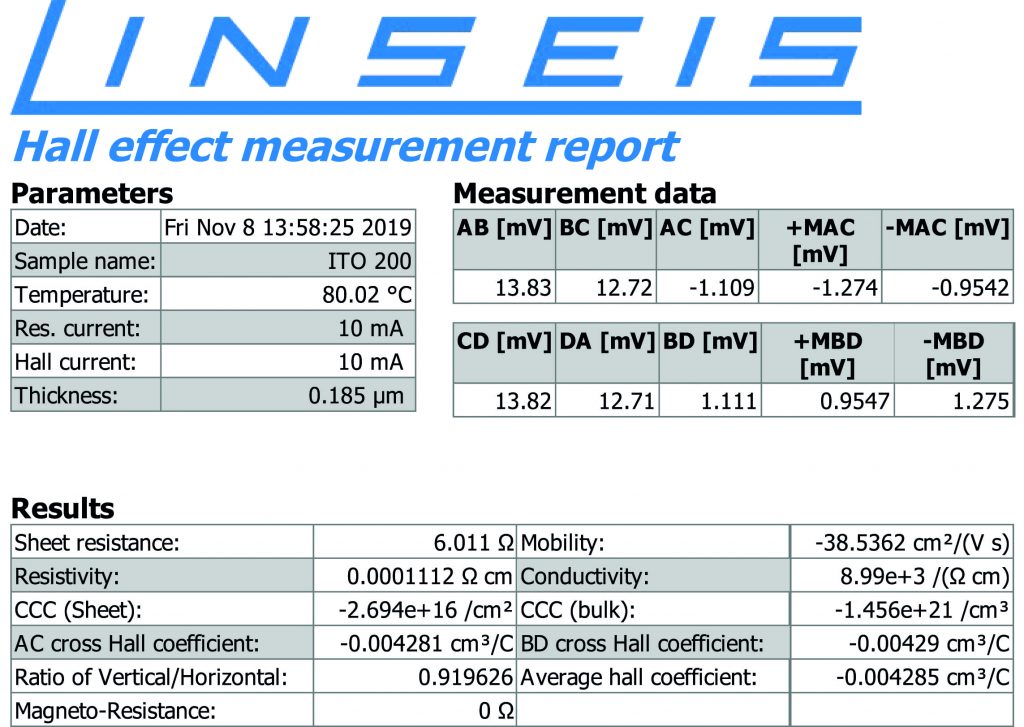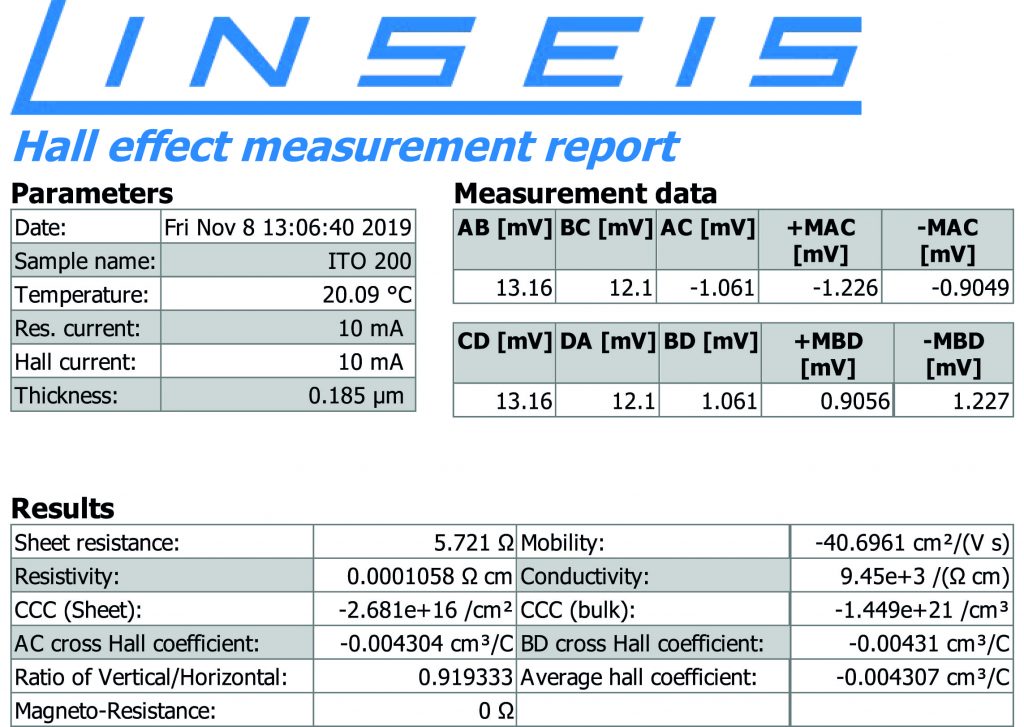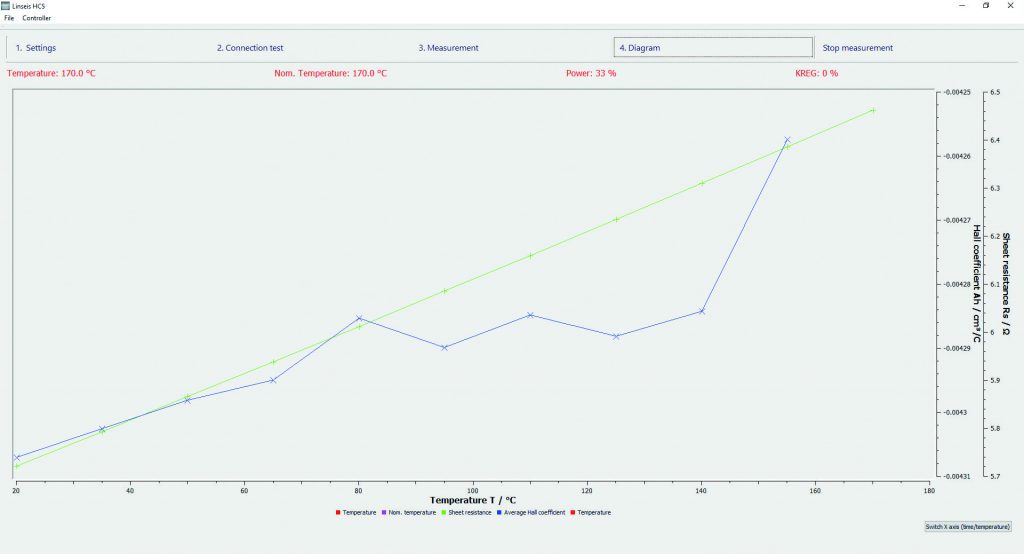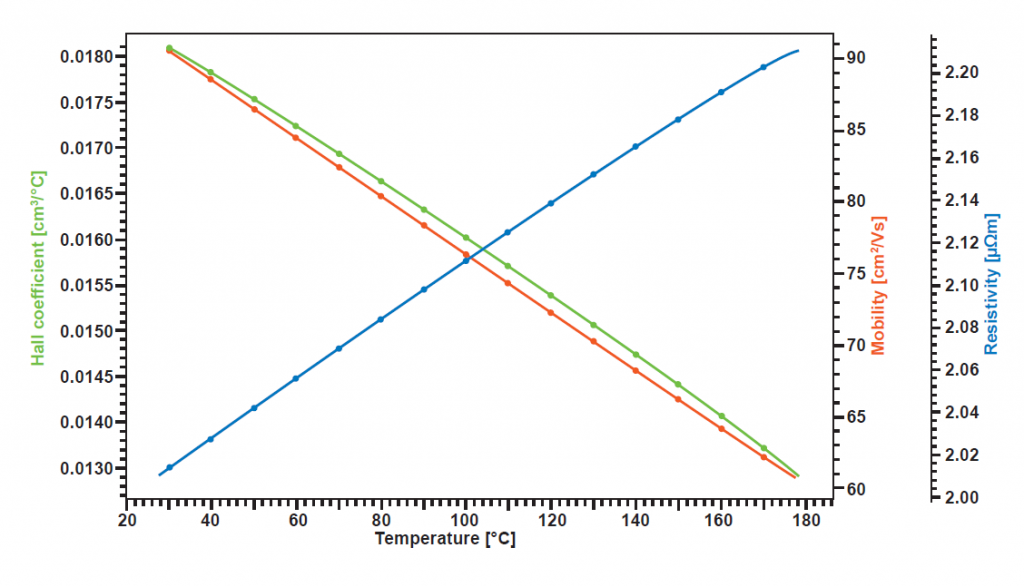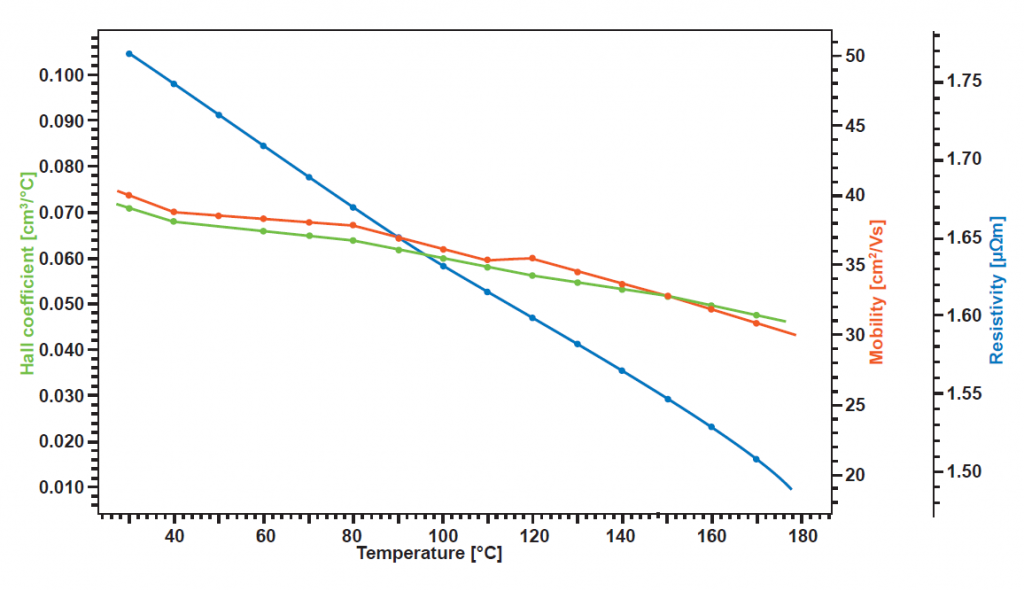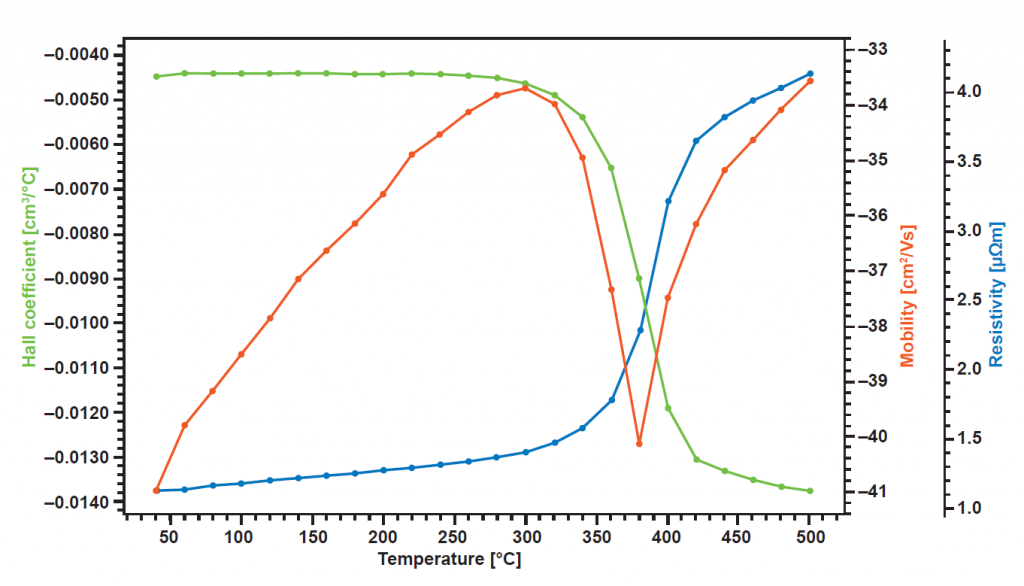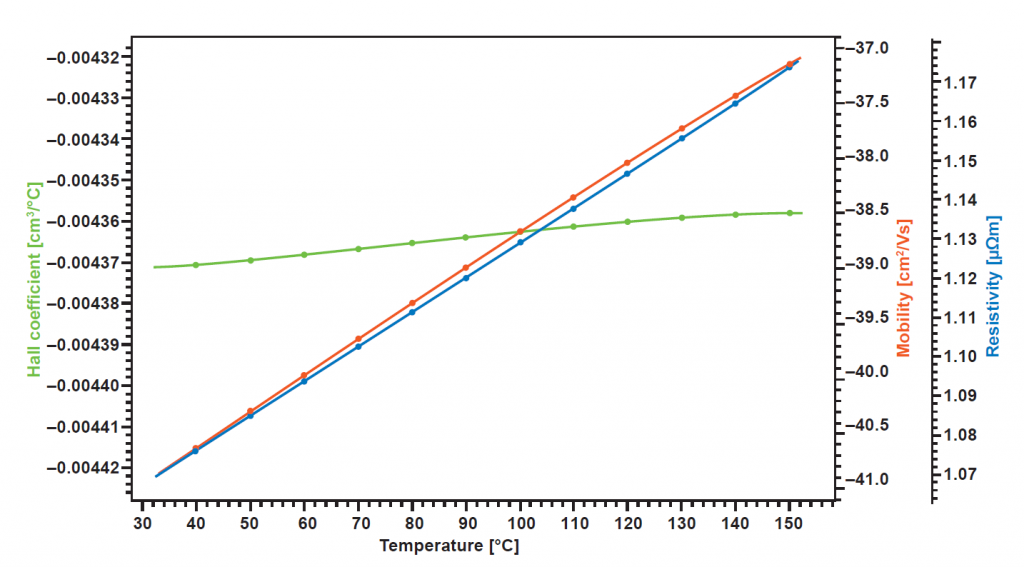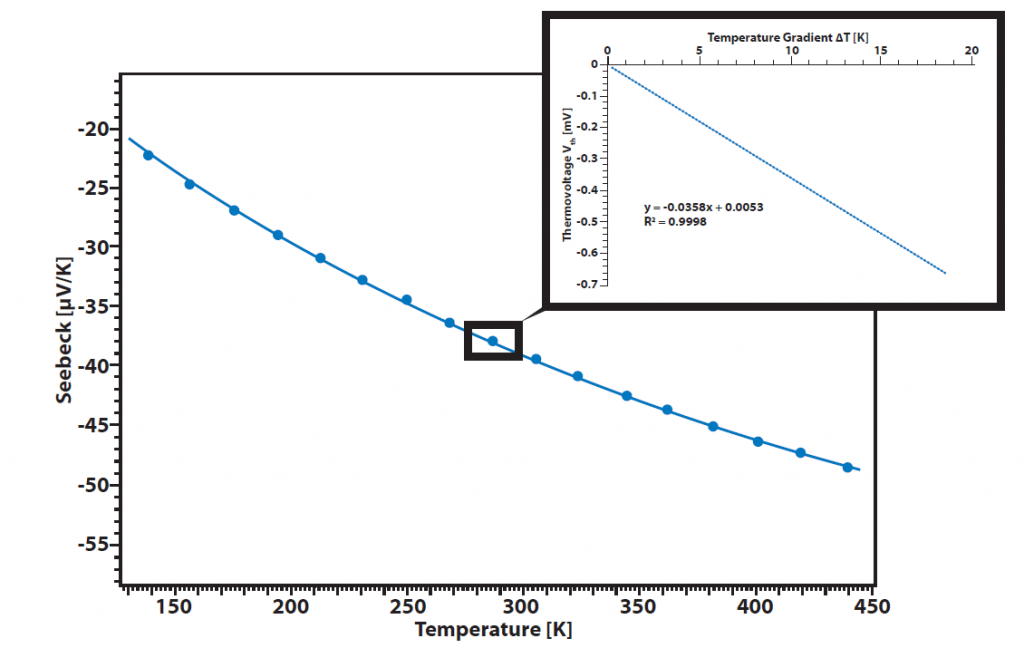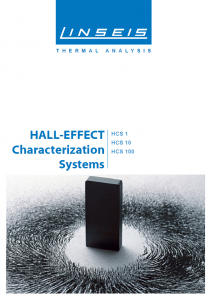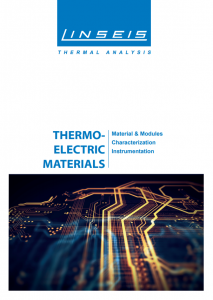HCS 1/ 10/ 100 – Hall Effect Measurement System
Characterization of semiconductor devices
Description
On point
The HCS System permits the characterization of semiconductor devices regarding their electric transport properties, in particular Hall-mobility, Charge Carrier Concentration, Resistivity and Seebeck Coefficient. The integrated desktop setups offer a complimentary product line-up from a basic, manual operated, Hall Characterization stage to an automized high temperature stage up to the innovative Halbach configuration for the characterization of most challenging samples.
The systems can be equipped with different sample holder for various geometries and temperature requirements. An optional low temperature (LN2) attachments is available as well as a high temperature version up to 800°C, to ensure that all fields of application can be covered. Depending on the system configuration, either a permanent magnet, a water cooled electromagnet or a Halbach magnet provide magnetic field strength of up to 1 Tesla. The comprehensive Windows based software offers an easy to use graphical user interface to control the system parameters, define measurement procedures and temperature profiles as well as allows for an easy data evaluation, presentation and storage.
Measurement features:
- Charge Carrier Concentration (Sheet [1/cm²]/Bulk [1/cm³])
- Hall-Constant [cm³/C]
- Hall-Mobility [cm²/Vs]
- Sheet resistance [Ω]
- Resistivity [Ωcm]
- Conductivity [S/cm]
- Alpha (horizontal/vertical ration of resistance)
- Megneto resistance
- Seebeck Coefficient [μV/K]
System features:
- Gas tight measurement chamber which allows measurements under defined atmospheres or vacuum conditions
- 120 mm diameter magnets for highest field homogeneity and maximum accuracy as well as biggest measurable sample sizes
- Modular and upgradeable system design
- High temperature version up to 600°C / 873 K
- Illumination option with LED Light source (multiple wavelength)
- Lock-in amplifier upgrade for lowest noise measurements
- Connector for use of external electronics
- Integrated software package for easy handling
- Seebeck Coefficient option to apply on board temperature gradients up to 20K

You are interested in a Hall instrument?
You need more information or service measurement?
Contact us today!
Measurement system
Permanent Magnet Option (HCS 1)
The HCS 1 stage is equipped with two magnetic circuits (Neodymium), assembled on a moveable sledge, which optionally can be automized. The system can be equipped with a low temperature as well as high temperature extension.
Electromagnet Option (HCS 10)
Optional to the permanent magnet, an electromagnet kit is available. The water cooled electromagnet is working in combination with a programmable power supply and a current reversal switch. The power supply can apply currents of up to 75 A, resulting in a variable magnetic fi eld strength of up to +/-1 T.
Halbach option (HCS 100)
The HCS 100 uses a magent in Halbach configuration (permanent magnet in donut configuration), in order to apply either a DC or an AC magnetic field to the sample. In combination with an AC current, provided by a Lock-in amplifier, this setup is a powerful tool for the investigation of challenging samples, as occuring offsets as well as noise can be suppressed in most cases.
Specifications
| Model | HCS 1 |
|---|---|
| Temperature range: | From LN2 up to 600°C in different versions -160°C (controlled cooling) -196°C (quench cooling) |
| Magnet: | two permanent magnets with +/- 0.7T** Pole diameter 120 mm for highest uniformity (+/- 1% over 50mm) |
| Input current: | DC 1nA up to 125mA (8 decades / Compliance +/- 12V) |
| Voltage measurement: | DC low noise / low drift 1μV up to 2500mV, 4 decades amplification, Digital resolution: 300pV |
| Sensors/ Sample geometry: | – from 5 x 5 mm to 12.5 x 12.5 mm, Maximum sample height 3 mm – from 17.5 x 17.5 mm up to 25 x25 mm, Maximum sample height 5 mm – from 42.5 x 42.5 mm up to 50 x 50 mm, Maximum sample height 5 mm – High Temperature board, 10x10mm, max. sample height 2mm |
| Resistivity Range: | 10-4 up to 107(Ωcm)* |
| Carrier concentration: | 107 up to 1021cm−3* |
| Mobility range: | 0.1 up to 107(cm2/Volt sec)* |
| Atmospheres: | Vaccum, inert, oxidizing, reducing |
| Temperature precision: | 0.05°C |
| Model | HCS 10 |
|---|---|
| Temperature range: | From LN2 up to 600°C in different versions -160°C (controlled cooling) -196°C (quench cooling) |
| Magnet: | Electromagnet up to +/-1 T variable DC field, Pole diameter 76 mm, Power supply 75A / 40V. Current reversal swith for bipolar measurement. Alternative AC-Option für ein magnetisches Wechselfeld mit ~1 T nutzbarem Feld, bei einer Frequenz bis zu 0.1 Hz. |
| Input current: | DC 1nA up to 125mA (8 decades / Compliance +/- 12V) AC 16 μA up to 20 mA and input impedance: >100 GigaOhm from 1 mHz to 100 kHz |
| Voltage measurement: | DC low noise / low drift 1μV up to 2500mV, 4 decades amplification, Digital resolution: 300pV AC 20 nV up to 1V, Variable integration times and amplfication |
| Sensors/ Sample geometry: | – from 5 x 5 mm to 12.5 x 12.5 mm, Maximum sample height 3 mm – from 17.5 x 17.5 mm up to 25 x25 mm, Maximum sample height 5 mm – from 42.5 x 42.5 mm up to 50 x 50 mm, Maximum sample height 5 mm – High Temperature board, 10x10mm, max. sample height 2mm |
| Resistivity Range: | 10-4 up to 107(Ωcm) |
| Carrier concentration: | 107 up to 1021cm−3 |
| Mobility range: | 10-2 up to 107(cm2/Volt sec) |
| Atmospheres: | Vaccum, inert, oxidizing, reducing |
| Temperature precision: | 0.05°C |
| Model | HCS 100 |
|---|---|
| Temperature range: | RT up to 500°C |
| Magnet: | Magnet up to 0.5 T (AC or DC field) Multisegment Halbach configuration, Inner diameter: 40mm, Height: 98mm |
| Current output: | DC 1nA up to 125mA (8 decades / Compliance +/- 12V) AC 16 μA up to 20 mA and output impedance: >100 GigaOhm from 1 mHz to 100 kHz |
| Voltage measurement: | DC low noise / low drift 1μV up to 2500mV, 4 decades amplification, Digital resolution: 300pV AC 20 nV up to 1V, Features: GΩ range input impedance, variable integration times and amplification |
| Sensors/ Sample geometry: | up to 10 x 10mm, Maximum sample height 2.5 mm |
| Resistivity Range: | 10-5 up to 107(Ωcm) |
| Carrier concentration: | 107 up to 1022cm−3 |
| Mobility range: | 1 ~ 107cm2V-1s-1 |
| Atmospheres: | Vaccum, inert, oxidizing, reducing |
| Temperature precision: | 0.05°C |
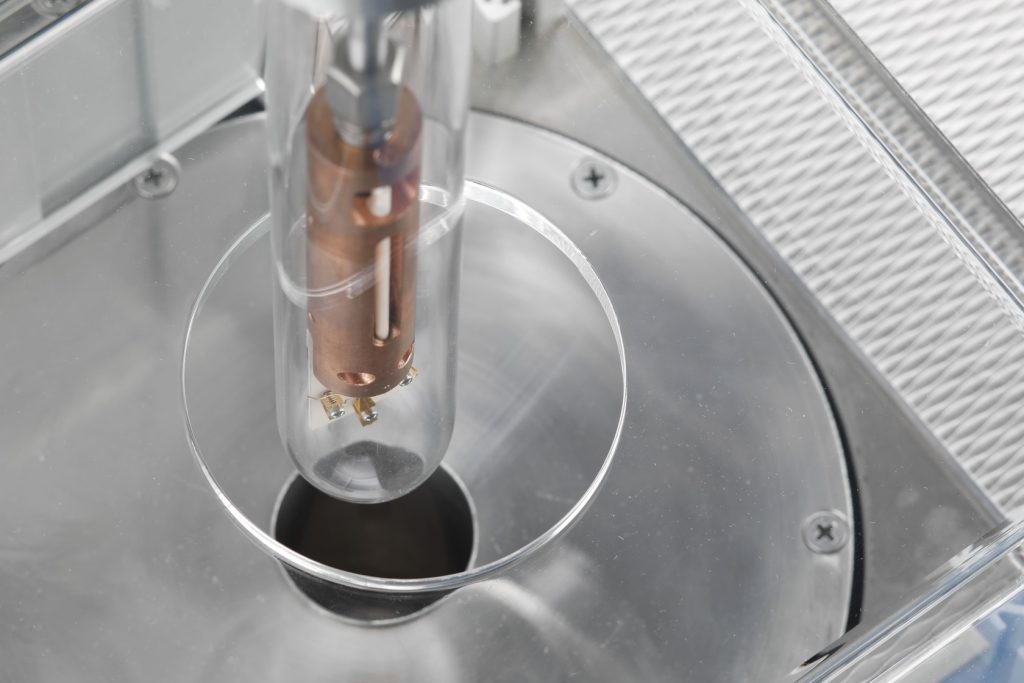
HCS 100: halbach magnet (donut configuration)
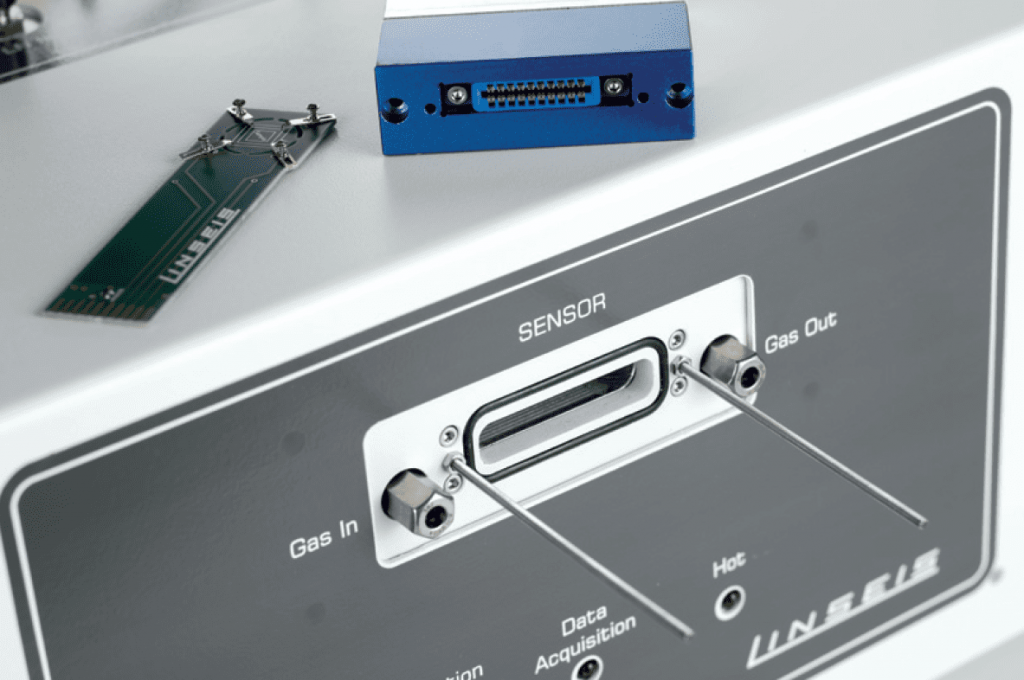
HCS 1: Exchangeable Sensors with an EPROM on it for easy plug and play usage.
Seebeck-Option
| Model | HCS 1 | HCS 10 |
|---|---|---|
| Sample Geometry: | length 6 mm to 15 mm, width 1 mm to 10 mm, height thin film to 2 mm |
length 6 mm to 15 mm, width 1 mm to 10 mm, height thin film to 2 mm |
| Seebeck Coefficient: | from 1 μV/K up to 2500 μV/K | from 1 μV/K up to 2500 μV/K |
| Measurement: | Slope technique with 10 Readings/Sec | Slope technique with 10 Readings/Sec |
| Gradient heater: | from 0.1 K up to 20 K | from 0.1 K up to 20 K |
| Thermocouples: | Type K | Type K |
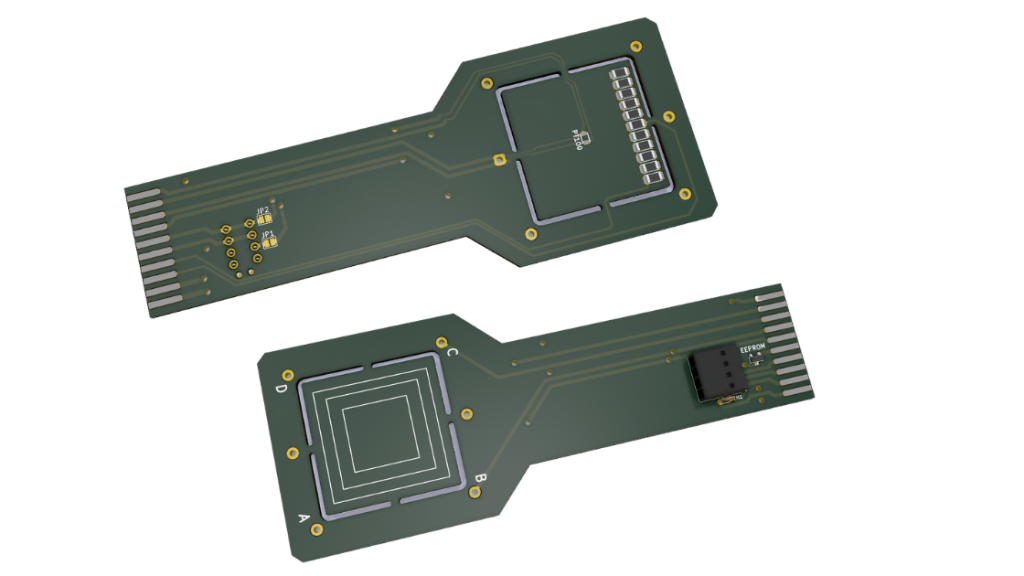
HCS Seebeck Sensor
Accessories
Extend your capabilities
- Different sample holders are available to take measurements from LN2 up to 800°C.
- The sample holder handle closes the measurement chamber vacuum tight.
- The measurement chamber is provided with a gas in and outlet, so measurements can be taken under controlled and changeable atmospheres.
Software
All LINSEIS devices are PC controlled, where the individual software modules exclusively run under Microsoft® Windows® operating systems. The integrated software allows for an easy handling, temperature control, data acquisition and data evaluation.
General features
- NIST routine to find optimum measurement settings and get highest accurate results
- Extended connection test
- Possible integration of external electronics
- Optional Database storrage
- Optional Lock-in amplifier integration
- Automatic sensor recognition (EEPROM)
- Automatic evaluation
- Fully automatic cooling regulation
- HCS 10 online access to fit data
Applications
Antimony Thin Film (150 nm Sb)
Antimony (Sb) is a semimetal, which is widely used in the field of thermoelectrics (in form of alloys, e.g. Bi1−xSbx) and as an emerging application is the field of microelectronics. Nevertheless, the largest applications for metallic antimony are lead antimony plates in lead–acid batteries. The figure shows a full characterization of a thin film on SiO2/Si substrate, prepared by sputter deposition, with the Linseis HCS 1 (RT to 200°C option).
Bismuth-antimony Thin Film (150 nm Bi87Sb13)
Bismuth-antimony alloys, (Bi1−xSbx) are binary alloys of bismuth and antimony in various ratios. Some, in particular Bi0.9Sb0.1, were the first experimentally observed three-dimensional topological insulators, materials that have conducting surface states but have an insulating interior. Various BiSb alloys are also used in low temperature thermoelectric devices. The presented measurement has been conducted on a thermally evaporated Bi87Sb13 thin film.
ITO (Indium tin oxide) up to 600°C using HCS 10
Indium tin oxide (ITO) is a ternary composition of indium, tin and oxygen in varying proportions. Depending on the oxygen content, it can either be described as a ceramic or alloy. It is transparent and colorless in thin layers and is one of the most widely used transparent conducting oxides because of its two main properties: its electrical conductivity and optical transparency. As with all transparent conducting films, a compromise must be made between conductivity and transparency, since increasing the thickness and increasing the concentration of charge carriers increases the material‘s conductivity, but decreases its transparency.
ITO (Indium tin oxide) up to 200°C using HCS 1
The two diagrams show a full characterization of two different ITO thin films (both 185 nm in thickness),
prepared by sputter deposition with the Linseis HCS 1 (RT to 200°C option) as well as HCS 10 (High temperature option up to +600°C).
Measurement of the Constantan reference sample
Seebeck Coefficient measurement on a Conctantan reference sample from -140°C up to +180°C. The Seebeck Coefficient is measured using the slope technique (see inset) for each temperature measurement point. The result can be plotted as Relative Seebeck Coefficient against Pt or as Absolute Seebeck Coefficient.
External applications
- Effect of alkaline earth dopant on density, mechanical, and electrical properties of Cu0.97AE0.03CrO2 (AE = Mg, Ca, Sr, and Ba) delafossite oxide (published 2018 Journal of the Australian Ceramic Society)

